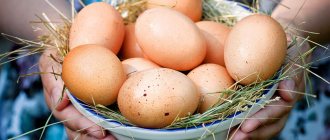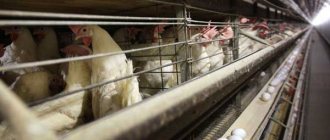Should I have chickens in my dacha?
Read the charter
Raising broilers or laying hens in the country is very profitable. Therefore, many lovers of the summer season decide to keep these birds on their property. Caring for them is not difficult, and the reward will be delicious homemade eggs and meat without antibiotics.
But before you get down to business, you need to find out whether it is possible to keep chickens in SNT. To do this, you need to familiarize yourself with the charter of the dacha partnership. It specifies the rules for keeping animals and poultry on the site.
Even if the statute does not prohibit the breeding of livestock, keeping chickens in the dacha is organized in such a way as not to disturb the neighbors. In most cases, each summer resident is allowed to keep no more than 40 birds.
Advantages and disadvantages
Raising chickens in the summer has a number of advantages. Laying hens will produce several fresh eggs every day. And at the end of the season, before leaving, the raised chickens can be slaughtered and get tasty meat.
Children will love caring for birds. They happily feed the birds and love to collect eggs for breakfast.
But it is important not to forget about the disadvantages. You will have to equip a room for chickens, since they require comfort. It will be impossible to go to the city for a while, because the birds are fed twice a day.
It is also important to remember the moral aspect. Not all summer residents will be able to kill a bird in cold blood. Especially those who are used to buying chicken in the store.
Legal aspects of divorce
For many dacha neighbors, chickens in the dacha are nothing more than a spreadable infection, lice, ticks and a way to attract rodents, therefore, often when deciding on the issue of raising poultry on a dacha plot, many private farmers doubt whether the law allows keeping on a dacha plot , for example, 30 or more chickens.
Current legislation provides the opportunity for members of gardening associations to keep animals on the land plots provided to them in such numbers as would ensure compliance with all sanitary standards and would not cause damage to neighbors.
It is prohibited to keep large livestock such as horses, cows and pigs in dachas, but it is better for a dacha poultry house to breed rabbits, goats, lambs and poultry to obtain meat and eggs from them with written consent received from nearby neighbors, having fenced off an area for them and equipped there is an outbuilding on it at a distance of at least 4 m from the boundaries of their plots.
In this case, the building must meet the requirements of fire safety measures and environmental protection rules.
It is worth remembering that livestock farming on a summer cottage cannot have a commercial basis; you can start raising chickens within a gardening partnership solely for personal consumption. Provided that poultry is raised on a small scale exclusively for individual consumption, approval from veterinary supervision for country farming is not required.
Breed selection
Meat direction
If you are not confused by the disadvantages of keeping laying hens in the country, you need to choose a breed. This is an important aspect, because the living conditions and feeding ration will depend on the type of chicken.
To get a large amount of fresh chicken meat, it is better to buy broilers or meat chickens. They gain weight quickly.
Broilers are raised in the country from April-May to October-November. But these chickens are not known for their egg production, so they produce few eggs.
Meat chickens are larger and denser than their egg-laying counterparts. They have a calm, peaceful character. The most popular breeds are Cochin, Brahma, Plymouthrock, Cornish, Langshan.
Egg direction
Broilers are not suitable for producing large numbers of eggs. It is better to raise egg-producing chickens that do their job properly. The following breeds are ideal for growing in the country in summer:
- Hamburg;
- Andalusian;
- minor;
- leghorn;
- Russian white.
Representatives of egg breeds are smaller in size than broilers. They have dense feathers and thin legs.
Country chicken produces eggs with bright yellow yolks. The color is affected by carotene contained in homemade food.
These eggs are much tastier and more nutritious than those bought in the supermarket.
Which breed should I choose?
Before you start raising chickens, you need to decide what is required from the birds - meat or eggs. If eggs are needed in large quantities, then laying hens are needed, the most common breeds are:
- Minorcas.
- Hisex.
- Leghorns.
- Loman Brown.
- Italian partridges.
These breeds are resistant to many diseases, are not picky and have proven themselves well in our latitudes. Poultry of egg-laying breeds is usually purchased in the spring. You need to purchase pullets no older than 4–6 months, at which time the hens begin to lay eggs. The first eggs are small, but over time they become larger.
The most common meat breeds:
- Cornish.
- Broilers.
- Cochin.
- Brahma.
It is better to purchase meat chickens at the age of 60–70 days. Breeds of meat chickens lay eggs worse, but they gain weight well, which is fully consistent with their purpose.
Where can I buy
Chickens for the summer can be purchased from a breeder or at a poultry farm. Advertisement sites contain many offers for the sale of birds of any breed.
Try to look for an experienced breeder who has been breeding for several years and has a good reputation.
In this case, you will buy truly purebred chickens and can receive useful recommendations for raising them in country conditions.
The likelihood of acquiring sick birds with developmental disabilities is also reduced.
Preparing the premises
Before purchasing young animals, take care of the premises in which the feathered family can be settled. If there is a ready-made room that can be converted into a chicken coop, this option is the simplest and least expensive. If there is no ready-made one, start construction.
Today you can find many ready-made schemes and projects for budget and expensive poultry houses, made from a wide variety of materials. Therefore, here you should be guided only by your financial capabilities and preferences.
Here are some interesting and profitable options.
- Chicken coop in a polycarbonate greenhouse. Polycarbonate is an economical material that also has excellent performance characteristics. In the summer, this is an excellent overnight stay for the winged family, and in the winter it can be additionally insulated with polystyrene foam and a waterproofing layer can be placed, which will additionally retain heat. For regions with mild winters, it is possible for chickens to live in such a dwelling without additional heating. In harsh climates, small infrared heaters can be installed. Some poultry farmers install small wooden houses for laying hens in greenhouses for the winter, in which they can winter without heating.
- A wooden poultry house is a practical, although more expensive, housing. The advantage of such a structure is that it is more durable and reliable. In order to build such housing, it is important to select high-quality raw materials, and be sure to process them to extend their service life. You can build the structure with your own hands or seek the help of specialists. But, besides this, you can simply purchase a ready-made structure and install it anywhere on your site.
- Another good option is construction from foam blocks. Economical, energy efficient and durable material, which is also very lightweight and retains heat well. You can build a chicken coop from foam blocks that will last for many years.
There are other types of materials that can be used for construction. The choice depends on financial capabilities and preferences.
How to choose a bird
Appearance and behavior
When purchasing, pay attention to the condition of the chicken. She should look healthy and active, and not fall on her side when walking.
The nostrils should be clean and free of discharge. And the plumage is smooth and dense.
Look carefully at the paws. If their surface is not smooth, with bumps or growths, it is better to cancel the deal.
When buying young animals, pay attention to how the kids react to loud sounds and sudden movements.
Healthy chickens do not sit in one place, run quickly around the cage and instantly respond to food. They should have dry and clean fluff.
Age and other nuances
In late spring, it is best to start young animals 5 months old. In this case, the hens will lay eggs all summer long.
Day-old chickens are not suitable for breeding in the country. They will only ripen in late autumn, when it is time to go home.
You should be wary if you are offered to purchase chickens at too low a price. Perhaps there was an unscrupulous seller and the bird is sick.
Hens do not need regular interaction with a rooster to lay eggs well. Therefore, you don’t have to buy it for your dacha.
Where to begin?
For beginners, raising chickens at the dacha is a responsible task. But in reality there is nothing difficult here. It is important to simply prepare well by first learning about the needs of poultry.
First of all, determine the purpose of why chickens are needed in general, and how seriously you plan to raise them. For example, if you breed broilers to produce meat, then this is seasonal breeding, for which no special conditions will be required; it is enough to build a temporary habitat in the summer in the country.
If you plan to breed laying hens, using them to produce eggs, meat, and breed new offspring, then you will need to build a permanent building for their maintenance and ensure comfortable living in it at all times of the year.
Then you need to decide on the number of chickens, their breed, prepare a design for the chicken coop, and choose a place for its construction. At the same time, it is important to correctly correlate your desires and real possibilities.
Breed selection
The breed of chicken for a summer residence is chosen depending on the purpose for which they want to raise the bird. If you need laying hens to get eggs. The following breeds are the most productive in this regard:
- Minorca;
- Hisex;
- Leghorns;
- Loman Brown;
- Italian partridges.
These chickens have won the attention of Russian poultry farmers, as they lay up to 330 eggs per year, are characterized by high resistance to diseases, and are unpretentious in care and feeding.
Laying hens begin laying eggs at the age of 4-6 months. Therefore, if you plan to buy chickens and not raise them yourself, then you should pay attention to the age, especially if you want to get eggs as quickly as possible.
If breeding is necessary for eggs and meat, the following meat breeds of chickens are suitable:
- Cornish;
- Cobb-500;
- Cochin;
- Brahma.
They lay in a smaller volume, but gain weight well, which allows you to get a lot of meat.
Buy chickens or raise chickens?
Beginning poultry farmers often wonder what is the best way to start raising chickens - buy mature ones or raise them from chickens? Each method has its own advantages and disadvantages.
Experienced experts advise buying young animals. This is much more reliable, since if you buy a bird at the age of several months, you can be sure that they will survive and will soon begin to lay eggs. If you purchase chickens that are several days old, or even produce offspring yourself using an incubator, the risk of death of some of the individuals is high.
You should buy chickens exclusively from trusted sellers, preferably from large poultry farms. If you take from private individuals, there is a high probability of acquiring sick, infected females and males.
Arrangement of the place
Where to keep a bird
Before you have broilers or laying hens in your country house in the summer, you need to determine where they will live.
These birds need a comfortable place where they can calmly wander, peck grains and lay eggs.
When keeping chickens on a summer cottage only in the summer, it is not necessary to build a permanent chicken coop. To start, try keeping birds for one season. Poultry farming may not be your thing.
But you will still have to arrange a separate space. Otherwise, the chicken will rush all over the area, and problems will arise with collecting eggs.
Set up a wooden or brick structure with a roof and three walls. It should be located in an open, well-lit place with space for walking.
There must be shade on the territory. Birds will rest there if there is strong sun outside.
Do you need a chicken coop?
If you have been involved in poultry farming for several years or have decided to keep chickens year-round, build a good-quality chicken coop.
It should be in a well-lit area, but not under the scorching sun. Make sure that this is not a low-lying area, otherwise the room will constantly flood when it rains.
Do not build a structure under trees, near a road or a dog house. Chickens love peace and solitude. Constant barking, sounds from cars or fruit falling from trees will have a bad effect on their well-being.
This is discussed in more detail in the article “Construction of a summer chicken coop at the dacha.”
If you decide to have chickens for the summer, you don’t have to insulate the chicken coop. But be sure to consider the size of the room. 20-25 broilers or 10-12 egg-laying chickens are placed per 1 m2.
Walking yard
Be sure to provide a place for chickens to roam. You should not let them roam freely around the site. Birds will trample on the beds and rake them with their paws.
Some breeds of chickens fly well, so you will have to catch them from your neighbors or trim their wings.
Build a fenced enclosure and be sure to install a canopy. Birds will hide under it during bad weather.
All the nuances are described in the article “Building a pen for chickens with your own hands.”
Do you want to adopt chickens for the summer? 10 facts no one will tell you about
We have all heard the slogans more than once that chickens are unpretentious, eat what you give, live on a couple of squares, and most importantly, easily and without any fuss, provide the family of summer residents with fresh and tasty eggs. And the Internet is full of offers to adopt chickens (whether pullets, laying hens, or chicks) all year round, especially in the spring.
This year we decided to become the happy owners of laying hens. This is understandable - self-isolation, canceled trips, a child stuck at home all the time - all this encourages you to discover new horizons for yourself. Alas, not everything turned out to be as rosy as on the pages of sites offering chickens for sale and even for rent. I will share the knowledge that cost me a lot.
It won't pay off
I’ll say right away: buying eggs from a farmer for the whole family all summer will be cheaper than buying chickens, building them housing, providing them with food, treating them and protecting them from pests, etc. Therefore, seasonal poultry farming can only be considered as a hobby, and not the cheapest one.
Even if you have a barn in which you are going to fence off a corner for the birds, buying everything you need (and the chickens themselves) will still cost a pretty penny.
- How to build a summer chicken coop with your own hands in a few days
Drawings, photos, calculations of materials and a detailed description of the stages of building a chicken coop for those who decide to build it themselves.
The chickens are dying
I know this sounds terrible, and now you will all start writing that when you were a child in your village, chickens ran around on their own, laid eggs the size of a fist and never got sick. And of course, if you have the opportunity to take village chickens from under the hen, their immunity will be strong. Do you know why? Because all weak and non-viable individuals passed (or rather did not pass) natural selection at the egg or chick stage.
But most of the offerings on the market now are “incubator”, growing in a brooder and then in a cage and having no idea what grass, worms, birds of prey and other “joys of life” are. The immunity of these creatures, even if the breeder was not greedy with vaccinations, is quite different from the immunity of those village chickens from childhood that you remember. They can die from heat, cold, stuffiness, improper feed, nails caught in the enclosure, or even simply pecking on their own droppings. Moreover, if you can control the first factors, then there is nothing you can do about the last one, except that you stand over them 24/7 and watch.
By the way, the village chickens also died, but they immediately went into the dog’s soup, and you didn’t notice it.
- Country house: how to recognize that a chicken is sick - first aid and prevention
We talk about the most common problems that chicken owners may encounter.
Breeders will try to deceive you
Oh, how endless the world of poultry farming tricks is and how defenseless are summer residents who decide to take their first chickens. Here we have the sale of moulted two-year-olds as four-month-olds “already almost laying hens,” and the imposition of outright culling, and the lack of vaccinations. One of the sellers even tried to sell us a young rooster, claiming that it was just a very bright chicken.
We are all aware of stories when at the poultry market, instead of an expensive puppy, a mongrel puppy was sold, but for some reason we believe that this will not happen with chickens. So, it won’t be like that.
Chickens from a poultry farm are more reliable than those from an unknown private owner
If there is a state-owned poultry farm near you that sells young birds, play it safe and buy them there. All vaccinations have been done there, the birds have definitely undergone regular veterinary checks, and they will give adequate advice on maintenance and feeding. And you will be sure that you are dealing with professionals, and not with someone who first took birds a few months before you and decided to recoup the investment.
The more exotic the breed, the more capricious it is
Should I take a Belarusian white or a Czech dominant? The choice is obvious, isn't it? What does that white one have to offer - it’s not beautiful, doesn’t have a record egg production, and you can’t brag about it to your neighbors. Or exotic breeds with bright plumage, colored eggs, furry legs and black combs!
Yes, exotics are good. But it is strictly not recommended to take them as the first birds. First, practice on stable breeds adapted to our climate, food, and diseases. And only then (if you don’t howl when cleaning the chicken coop in the first hot summer) add bright colors to the flock.
- What kind of chickens lay colored eggs?
A poultry farmer from the Moscow region shares his experience of raising unusual breeds of chickens.
“All summer with eggs” won’t work
Most of the modern breeds on offer begin laying eggs at 5 months. At the same time, either chickens, or adult laying hens that have already “worked” for a year, or three-month-old chickens are most often sold.
There is no point in taking chickens - they will not have time to grow up to egg-laying age during the summer season. Adult, experienced laying hens can decide at any time (including right after moving) that they have completed their mission and are not going to lay any more eggs. And finally, hens at 3-4 months of age, which are the most expensive, will also not start laying eggs right away. Taken for the May holidays, they will give you the first egg around June, and then gradually begin to swing. At first, a chicken needs 3-4 days to produce an egg, then things will go faster. By the end of the season, they will already reach the promised egg production, but here another problem awaits you.
Food can be counterfeit
Don’t try to save money on feed by purchasing grain from someone you know. Yes, wheat and corn from men with the appearance (and smell) of a real villager will be cheaper than in the store. But there is a possibility that this grain was prepared for sowing, and not for feed. During storage, it is treated against diseases and pests, and the storage facilities themselves are treated with strong drugs.
Such savings will smoothly (and sometimes not very smoothly) again lead you to point 2.
Domestic eggs cannot be produced on feed alone
There are many complete feeds on the market. It would seem that choose a good one, pour water into the drinking bowl and don’t think about the chickens for several days. Yes, this is also possible, and there are automatic feeders and drinkers that allow you to provide birds for a week in advance and go for eggs on weekends.
But the eggs obtained in this way will be no different from those lying on the shelf in the store. This means that your hobby will simply lose its meaning. Therefore, if you want the same thing with a bright yolk, prepare grain mixtures, provide walking, fresh vegetables and herbs, the opportunity to rummage in the ground and get a worm, and also do not forget about shells or shell rock, fish meal, meal, yeast and many other chicken delicacies .
- What to feed chickens to help them lay eggs better
Have you decided to have laying hens? Find out what to feed them in advance to ensure you have eggs all year round.
You will have to roost the chickens for the first week.
It would be funny, but it's a fact. Chickens raised in cages do not know what a roost is and do not know how to use it. Therefore, if it is important to you that they do not sleep on the cold floor or in nests and, accordingly, do not shit in them, you will have to accustom them to roost yourself.
It's not difficult: just arrive at dusk and place the chickens in their places. Children even like this “show”.
By the way, many modern laying hens that grew up in cages are also not aware of the purpose of the nests, so they lay right on the floor. If such a problem arises, place a painted wooden egg or a ping-pong ball in the nests - over time, the chickens will understand what you want from them.
Where to put chickens in winter
If you had a cunning plan - to receive eggs from chickens in the summer and send the laying hens to soup in the fall, I want to disappoint you right away - it won’t work. And the point is not only that a laying hen, even in its best years, does not look like the broiler we are used to from a poultry farm. It’s just that after everything you go through with them in the summer, you won’t be able to cut off their heads.
And the search will begin for a village resident with a year-round chicken coop and attempts to place his birds there for the winter. By the way, such services exist, but you will have to pay extra for food and maintenance.
Am I discouraging you from taking chickens to your dacha? Not at all. I just want you to not have to face the difficulties that I went through, and that you approach the issue of raising poultry without “rose-colored glasses.”
Arrangement of the premises
What should be in the chicken coop
Bedding must be placed on the floor of the chicken coop. Sawdust, hay, straw and even moss will do. The litter is changed as it gets dirty to keep it clean and dry.
Perches are installed where the birds sleep at night. Their length depends on the number of birds. Each chicken requires about 30 cm of perch, located at a height of 50-60 cm from the ground.
The perches should have rounded edges so that the birds can comfortably hold onto them with their paws.
A hole is made in one wall through which the birds can go outside for a walk at any time.
It should be the same size as the chicken so it doesn't get stuck. Width at least 50 cm, height – 70-80 cm.
Installing a socket
When keeping egg breeds, much attention is paid to nests. They should be comfortable so that the hens feel comfortable during laying.
The optimal depth of the nest is 60 cm, width and height 50 by 50 cm.
Detailed instructions for arrangement are described in the article “How to make nests with an egg collector for laying hens with your own hands.”
Broilers and meat breeds
The basic rule for keeping broilers in country houses is to install cages. Limiting movement leads to rapid weight gain.
By observing this condition, summer residents will be able to raise chickens in the shortest possible time. Continuing the topic, we recommend that you read the article “Features of keeping broilers in cages at home.”
If you do not want to quickly slaughter the bird for meat, you can keep broilers in SNT on litter. Such chickens need less movement than representatives of egg breeds.
Walking should not be excluded, but the area should be kept small. Constant exposure to fresh air has a beneficial effect on the taste of meat.
Breeds of chickens for breeding in a summer cottage
Laying hens lay eggs early without the instinct to hatch. Unpretentious breeds for a summer cottage:
| Name of chicken breed | Number of eggs per year, pcs. | Egg mass, gr. | At what age do they lay eggs, months? |
| Andalusian blue | 150 | 58 | 6 |
| Leghorn | 200 | 58 | 4 |
| Orlovskaya | 200 | 60 | 6 |
| Russian white | 200 | 58 | 5 |
| Minorca | 215 | 80 | 5 |
| Pushkin striped-pied | 220 | 60 | 5 |
| Kuchin anniversary | 220 | 60 | 6 |
| Hisex | 280 | 63 | 4 |
| Hisex Brown | 315 | 70 | 4 |
| Loman Brown | 320 | 64 | 6 |
To obtain eggs and meat, hybrid breeds are bred in the country:
- Barnevelder;
- Kyrgyz grays;
- Welsumer;
- Sussex.
Microclimate in the chicken coop
Temperature
Laying hens regularly lay eggs only at a comfortable temperature. The temperature in the chicken coop should be at least 11 degrees.
In summer, this indicator is observed, so there are no problems with egg production. If chickens remain at the dacha in winter, the room will have to be insulated.
Chickens stop laying eggs in extreme heat, when the temperature outside is above 28 degrees Celsius. Therefore, a ventilation system must be provided in the chicken coop to cool the room.
In the hot summer, a fan is installed in the poultry house. If the temperature outside the window is lower than in the room, the situation can be resolved by ventilation or installing a ventilation system. This is discussed in the article “How to properly ventilate a chicken coop.”
Humidity level
The humidity in the chicken coop should be between 60-75%. The indicator may increase due to a large amount of uncollected excrement containing moisture.
Humidity also increases due to the excess stocking density of chickens.
It is necessary to avoid dirt and excessive numbers of birds. And also ensure natural air circulation in the room.
Lighting in summer
Chickens need long hours of daylight in winter and summer. The coop should have light for about 14 hours a day. In this case, the birds will gain weight well and lay eggs.
In summer it gets dark late, so it is enough to make several windows in the room.
By the end of August, natural daylight hours decrease. During this period, it is recommended to install additional lighting.
The situation changes if you decide to have chickens and buy day-old babies. For the first 10 days, chicks require 24-hour lighting. The light in the chicken coop must be constantly on, otherwise the chicks will develop slowly and grow up weak.
After 1.5 weeks, daylight hours begin to gradually decrease and increase to 14 hours a day.
Methods of keeping chickens
Before you start keeping laying hens at your dacha in the summer, determine its method. It depends on the size of the dacha plot.
Floor
The outdoor option for keeping chickens is common. With it, the bird walks freely within the designated premises. In the chicken coop, the floor is covered with bedding made of loose material. Chopped straw and thyrsa are suitable for this purpose.
Advantages of the floor method of keeping laying hens in the country:
- birds move a lot, so they are less susceptible to diseases;
- a thick layer of bedding protects chickens from freezing;
- the presence of litter makes it easier to keep and care for chickens.
With the floor method:
- before pouring the litter, check the dryness of the flooring;
- the surface of the bedding of chickens in the country is periodically loosened with a rake;
- The bedding in the barn is replaced 2-3 times a year.
In cells
Summer keeping in cages solves the problem of placing a chicken coop and a place for walking. The method is suitable for small areas. 1 square meter of cage accommodates 5 times more birds.
Forced ventilation is installed in the barn. In summer cottages in rural areas, where electricity is turned off during the winter, a diesel generator is installed. It provides electricity to the ventilation system.
Feeding
Raising chickens at the dacha for beginners requires knowledge of the basics of diet planning. Birds are fed homemade feed or purchased feed, including vitamins and microelements. If you prefer the first option, the menu should be varied.
Each chicken is given about 180 g of food per day. They eat cereal mixtures, mixed vegetables, herbs and grains. The diet includes fish and meat waste, legumes, and sunflower seeds.
In summer, at the dacha, chickens are fed morning and evening. During the day they walk in the yard and independently find food for themselves in the form of grass and worms.
Laying hens need to receive a portion of fresh grass daily. It has a positive effect on egg production.
Care and prevention of diseases
Basics
If you decide to raise chickens in your country house, you need to regularly carry out preventive measures to prevent health problems for the birds.
The room should always be clean. It is necessary to wash the feeders and shelves daily, and clean the litter from excrement and feathers. The chicken coop is disinfected 1-2 times during the summer season.
Details in the article: “Methods of disinfecting a chicken coop at home.”
It is important to weigh your birds regularly. The weight indicator must correspond to age and breed. If the chicken is very thin or has gained a lot of weight, health problems may begin.
Additional
Ultraviolet lighting has a beneficial effect on the development and health of birds and increases egg production. Therefore, it would not hurt to install a UV lamp that produces vitamin D in the chicken coop at the dacha.
There should be a box with ash and sand in the poultry house. Birds will constantly wallow in it and clean their feathers of parasites.
Once a season, the chicken coop is treated against pests. Special products are sold in hardware stores.
Sick chickens should be immediately separated into separate rooms and treatment should begin. This measure will help prevent mass infection of birds.
Feeding and care rules
Often, beginners are faced with a lack of knowledge in the field of proper feeding of birds, therefore beginners when raising chickens in the country are recommended to purchase ready-made mixtures selected according to the age of the laying hen.
Among the basic rules for feeding poultry is two meals a day, subject to the availability of fresh greens. The bird's diet should include:
- grain of 2 types - 45 g each in spring and autumn, 40 g in summer and 50 in winter,
- crushed grain of 2-3 types - 55 g each in spring and autumn, 60 g in summer and 50 g in winter,
- meal and cake - 12 g throughout the year,
- bran - 10 g throughout the year,
- boiled potatoes - 20 g each in summer and autumn, 50 g each in spring and winter,
- yeast - 3 g throughout the year,
- carrots or silage - 40 g each in spring and winter, in spring - 20 g,
- grass or greens - 10 g each in spring and winter, 50 g in summer and 30 g in autumn,
- meal (meat and bone, fish) - 5 g throughout the year,
- return - 20 g each in spring, autumn and winter, 30 g in summer,
- shell rock and chalk - 4 g each throughout the year,
- salt - 0.5 g throughout the year.
Cereals are considered the most beneficial. The birds themselves prefer mash - a mixture of vegetables, feed and herbs. The supply of necessary vitamins is ensured by fresh grass and greens.
On average, one individual eats about 185 g of feed per day. Depending on the breed, this indicator can be either lower (in egg birds) or higher (in broilers).
Caring for chickens at a summer cottage means vaccinating, regularly inspecting birds, identifying sick individuals and isolating them from the main flock. Caring for chickens also includes timely cleaning and disinfection. During the period of keeping hens, you need to monitor the availability of drinking water.
Organizing a place to sleep and walk at home
The place for laying hens to sleep should first of all be dry and warm . Chickens usually sleep on perches, or on the floor, provided that the floor is quite warm even in the cold season. Perches are installed approximately 30-40 cm from the floor, but can be installed higher.
If the perches are installed high enough from the floor, which is convenient when cleaning the chicken coop, you should consider how the chickens will climb on them.
To do this, a small ladder is placed or intermediate slats are attached between the main perches. The perches should be large enough so that all the birds can fit on them without being crowded. They should be distributed in such a way that there is at least 20 cm of free space per individual. The width of the perch is approximately 5 - 6 cm.
Most often, the pen and chicken coop are located so that the bird can move freely from one place to another.
To do this, small manhole doors are made between the sleeping and walking areas , which are open both day and night in the warm season, so that the chickens can spend the night outside, and closed in cold weather.
IMPORTANT : All birds, with the exception of mini meat chicken breeds that can be kept in cages, need free range. To do this, next to the chicken coop you should consider a place where the bird can walk independently.
In a private homestead, the pen is usually enclosed with a fence or fine mesh. The place must be covered with a roof, so that in the rain the bird can comfortably stay outside, and in extreme heat it can hide from the sultry sun.
Make sure that other birds, such as sparrows or pigeons, cannot get into the chicken coop and fenced pen. Since free animals can bring with them various diseases , and birds, as is known, are capable of eating their own droppings if there is a lack of certain substances.
It can be very difficult to keep track of when chickens are missing something. Therefore, when eating infected droppings, a bird can acquire the disease, because domestic flocks are more susceptible to a variety of infections and viruses, unlike wild ones.
Basic requirements for a poultry house for laying hens
The chicken coop must correspond in size to the number of birds that will live in it. It is generally accepted that no more than 2-3 laying hens and cockerels can be housed per 1 square meter. Otherwise, aggression towards others can be seen among different breeds. Roosters will defend their territory and hens.
- The temperature in the chicken coop should be no higher than 20 - 25 degrees all year round .
This temperature is optimal for year-round uninterrupted egg laying. In summer it is more convenient to keep birds because there is no need to additionally heat the room, but in winter it is better to install additional heaters and lamps. The minimum temperature should be no lower than 10 - 15 degrees. If the coop is cooler, the chickens will start laying eggs less or stop laying eggs altogether. - The chicken coop should also have a well-thought-out ventilation system.. A budget option would be to make a small door between the pen and the chicken coop, which will serve both for the bird’s convenience of free movement and for air circulation in the chicken coop.
Or make a specially designed ventilation system in the chicken coop itself. The second option will be more expensive and time-consuming, but convenient, since even with the door closed, fresh air will flow into the chicken coop.High humidity can lead to both fungal diseases and the spread of various types of infections, so the room must be constantly ventilated (without drafts) in the summer and heated in the winter.
- The chicken coop should have good lighting . If you want to increase or, conversely, slow down the laying of eggs, then you need to extend or decrease the daylight hours accordingly.
- In order for chickens to lay eggs not just anywhere, but in a certain place, you need to make nests . There should be at least 2 nests for 10 laying hens. Usually, hay is placed in the nests to make the hens feel more comfortable, especially in the cold season.
- It is better if the floor in the chicken coop is wooden with a warm hay bedding, but in no case concrete, since it is quite cold and will not retain heat at all.
Ceilings should also not be high. The optimal ceiling height should be such that a person of average height can fit there - 1 meter 70 cm. If the ceilings in the chicken coop are high, then in winter it will be difficult to heat the room.
Watch a video about building a chicken coop:
Wintering of egg-laying birds
The optimal temperature for egg production in chickens is from -2 to + 27 degrees Celsius. At lower or higher temperatures, egg production may not only decrease, but even stop completely. If you decide to breed laying hens only in the summer, then at the end of September - beginning of October they should be slaughtered. Even if laying hens are not distinguished by the meatiness of their carcasses, they are very good and aromatic in the broth.
You may decide to keep chickens during the winter. In this case, you will have to build an insulated chicken coop and equip it with automatic drinkers and bunker-type feeders, if you do not live in the country in winter. It will be enough to come to the dacha once a week to add food and drink, and monitor the growth and health of the bird.
Now let’s talk about how to arrange a winter home for laying hens. When building a full-fledged chicken coop, the easiest way is to use available materials, such as cinder blocks, logs, boards and slate.
- Cinder blocks are a rather expensive material, but they are more durable than other options. Such a structure will stand long and strong, and will require almost no additional processing.
- If you decide to use lumber and slate in construction, then you need to take care of insulation. Straw, dry leaves, and sawdust can serve as insulation. To prevent rodents from infesting the insulating layer, mix the material with lime.
- You can also use mineral wool as insulation, laying it in an even layer and insulating it with layers of plasterboard.
- An important condition is good ventilation of the room in which the hens are kept. A constant supply of fresh air will eliminate the development of diseases and ensure regular movement of the birds.
- To avoid bird diseases, disinfect the premises approximately once every 2-3 months. Cover walls, perches and floors with lime mortar: 2 kg of quicklime per 10 liters of water.











